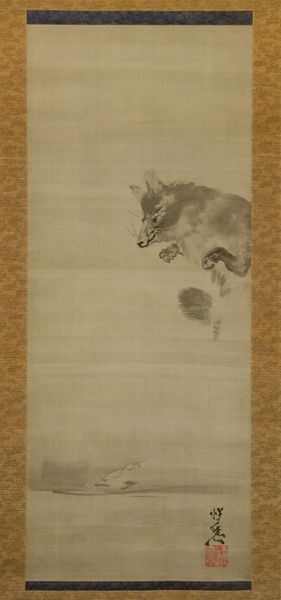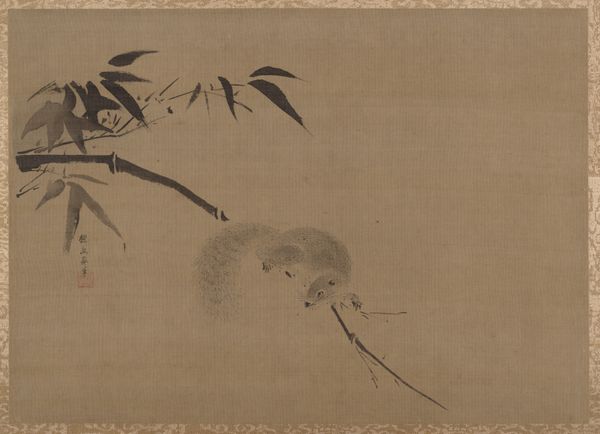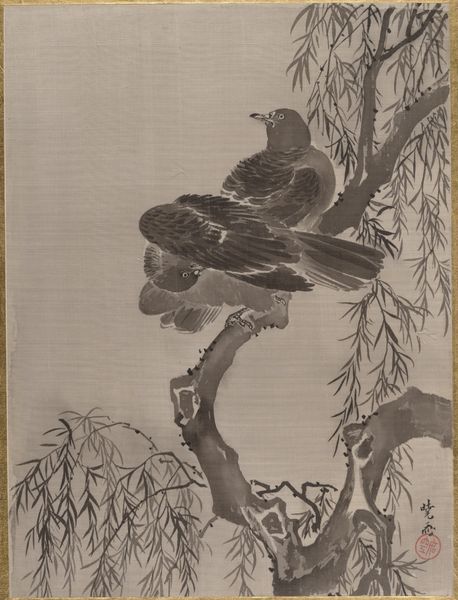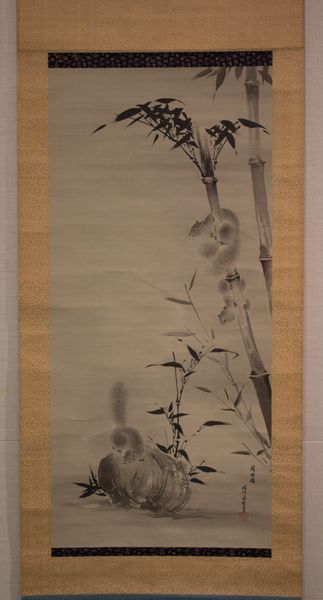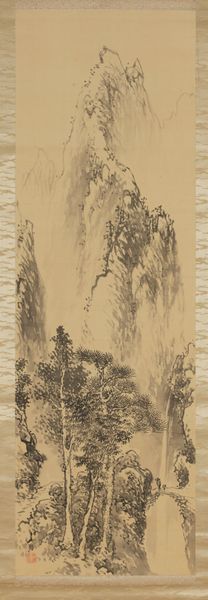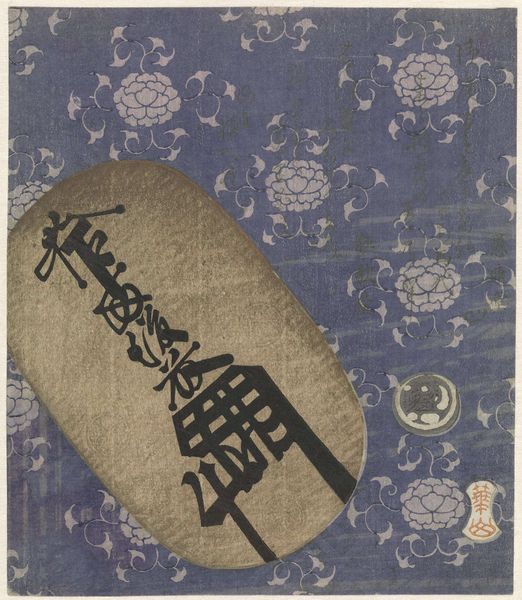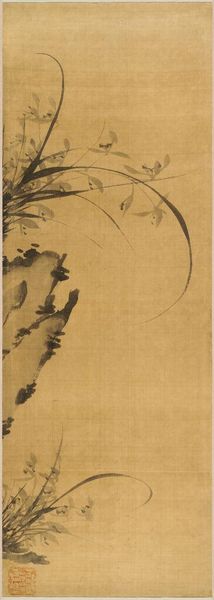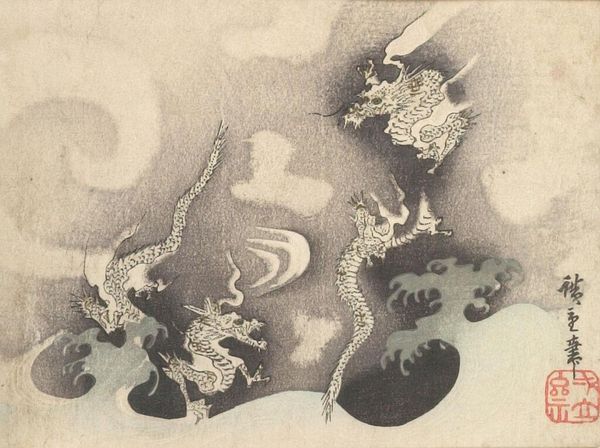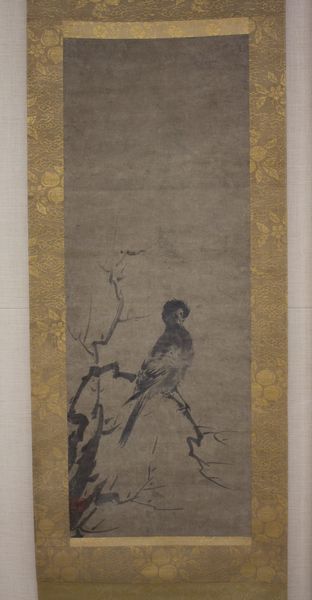
paper, ink
#
asian-art
#
landscape
#
ukiyo-e
#
paper
#
ink
#
orientalism
Dimensions: Image: 38 3/8 × 15 15/16 in. (97.5 × 40.5 cm) Overall with mounting: 74 × 21 1/4 in. (188 × 54 cm) Overall with knobs: 74 × 23 1/4 in. (188 × 59.1 cm)
Copyright: Public Domain
Curator: This is Nagasawa Rosetsu's "Moonlit Landscape," created with ink on paper around 1794-1795. It resides here at the Metropolitan Museum of Art. Editor: It's so ethereal! That immense moon dominating the scene... there's a sense of haunting stillness. The starkness of the ink creates such a potent atmosphere. Curator: Absolutely. Rosetsu, working in the Edo period, was a master of capturing not just the physical scene, but the feeling it evoked. Ukiyo-e, in which genre the artist sits, isn't always given enough attention for how politically poignant the work can be. You can read these landscapes as comments on class and hierarchy in Japanese society at the time. The common people were often depicted small against enormous imposing landscapes, speaking volumes about autonomy and freedom of movement in Japan. Editor: Yes, that imposing scale—and the composition with the stark, lonely trees—they definitely resonate with those themes of isolation. But those trees! Are they pine? And does the moon hold a deeper significance? There’s such clear intention in every element... Curator: Many see the pines as symbols of resilience and longevity, deeply ingrained in Japanese culture, as is reverence for the moon with its connections to cycles of time and ideas of feminine divine. But Rosetsu presents these very familiar icons with such a striking emptiness. Editor: It’s true. It disrupts any easy, comforting interpretation. Is it a hopeful image, suggesting endurance, or is it critiquing the weight of tradition? Perhaps Rosetsu is prompting us to interrogate those symbols ourselves in relation to our understanding of oppression. Curator: Exactly. And Rosetsu, always subverting expectation, always with tongue-in-cheek, invites us to delve deeper. I do think this landscape offers much fodder to dissect not only the art historical and social contexts, but also how we experience these elements through the lens of contemporary intersectional perspectives. Editor: A landscape that’s less about serenity and more about challenging our assumptions. It definitely sticks with you. Curator: Absolutely. It invites us to consider landscape as a potent stage for reflecting on societal narratives and visual histories.
Comments
No comments
Be the first to comment and join the conversation on the ultimate creative platform.
